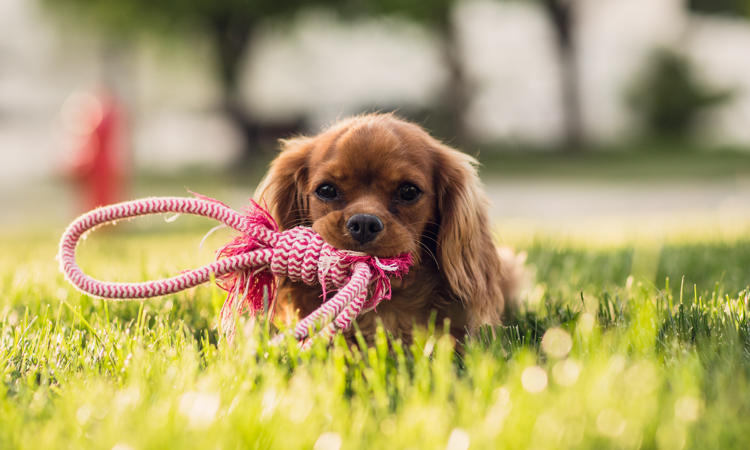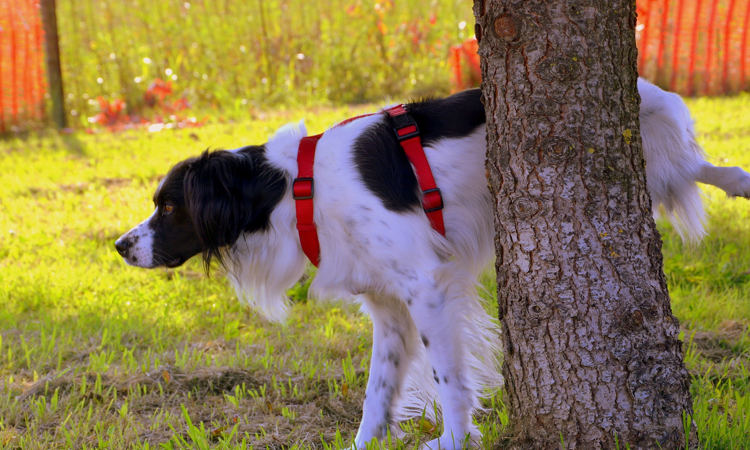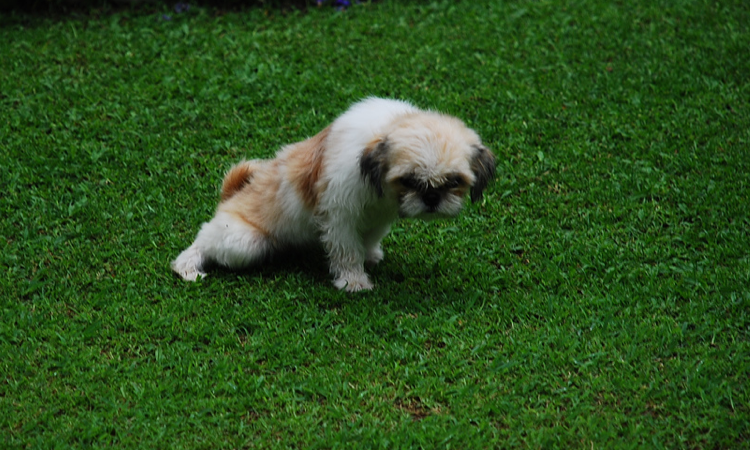Toilet training new puppies, sometimes known as housebreaking, is one of the key areas we’d all like to master quickly, for obvious reasons! Just like a toddler who is being toilet trained, puppies need to be taught where is appropriate to pee and poop and where is a no-go area.
Some dogs won’t have been toilet trained properly from the beginning; but these dogs (including rescue dogs) can also be toilet trained, even if they are older. So where to begin? Is it really possible to housetrain your puppy in seven days? Can an older dog be taught where to do their business? In the following article, we’ll guide you through the answers to all your doggy do-do questions.
How to house train your puppy

Puppies are prone to more accidents while they’re still learning where it’s appropriate to relieve themselves. At this young age, puppies can only hold their bladder for one to two hours to begin with, so expect regular pee trips. Rather than be dismayed, why not see this as an opportunity? These repeated excursions to the garden or park present lots of training sessions, even in one day – repetition and positive encouragement are key to housebreaking success!
Luckily, doggy bladder control increases as they get older and puppies also have a natural instinct to mess away from their bed or den – which should make cleaning up accidents a bit easier when they happen! Some good tips to get started when housebreaking your puppy include:
- If you’re using crate training, create a bed area and a separate area for going to the toilet. In the toilet area, you can lay down some newspaper, puppy pads or fake turf. If you aren’t using a crate, lay puppy pads by the back door and in any corners that you think your puppy might be likely to go in.
- Remember that your puppy will also need to go through the night, so it may be worth setting an alarm to wake yourself up.
- Avoid telling your puppy off too firmly and certainly don’t shout or rub their nose in it if they go to the toilet in the house. Despite conflicting advice, this will only make them hide (in the house!) next time they need to go and they’ll be reluctant to go in front of you, which isn’t good for them or you!
- If you catch your puppy in the middle of an accident, take them outside as quickly as you can. If it has already happened, clear it up and then take your puppy to a different area of the house or garden.
Here’s how to begin the housebreaking process:
- Your puppy is likely to need the toilet as soon as they wake up, after a drink or meal, every few hours and before bed.
- At one of these times, or if your puppy is sniffing, circling or looking like they need to go, calmly take them outside. Wait five minutes and if they go, praise and reward them as soon as they finish.
- If your puppy does not go after five minutes, bring them back inside but keep a close eye on them. You can then try going back outside again after five or 10 minutes have passed. Remember not to play with them during this time, as you want to encourage them to learn how and when to go outside.
- As your puppy begins to go outside more and inside less, you can reduce the treats and eventually let them out on their own to do their business.
- A puppy is considered housetrained when they have gone four consecutive weeks without an accident. With patience and consistency, this is easy to achieve with almost every dog.
How to house train an older dog

An adult dog can be toilet trained and taught how to go outside. Some may never have been taught, others may have had poor training and others just need the chance to get used to their new space before they can reliably go where they need to.
Here’s how you can help an older dog to become house trained:
- Get your dog into a routine with going outside to do their business. Take them out first thing in the morning, last thing at night and after any meals or drinks. The older the dog gets, the less time it will be able to hold their bladder.
- Look out for behaviour outside of this that your dog might need to go such as sniffing or circling the floor. When you see this, take them outside. If you catch them having an accident take them outside but don’t tell them off.
- Each time your dog goes in the right place, praise them and give them a treat. This will need to be done within a few seconds of them going for them to make the association.
Eventually, your dog will begin going to the door or showing behaviour that they want to go outside when they need to go. Before long, your dog’s toilet pattern will become like clockwork and you can rely on them to let you know when they need to go.
How to teach your dog to go to the toilet on cue

Teaching your dog when it’s time to pee and poop can be a great skill that means you’re not hanging around waiting for them. This will make cold days, car journeys and other trips much easier when you can ask your dog to go and check that they have been before you set out.
- Wait for your dog to begin going to the toilet then add a special verbal cue like “business time”, “toilet”, “pee poop” or “quick”.
- Give your dog lots of praise and a treat once they have finished.
- Once you have practiced this a few times, take your dog outside when you know they need to go and add the cue just before they relieve themself (usually in the sniffing/circling stage).
- Once your dog has got the hang of this, take them outside and say it just before they go. After practice, you should be able to say the cue and your dog should go on command.
Always ensure you give treats or praise to your dog for going on cue and be sensitive to the times when they just might not need to go, despite how much they want to please you.
Have you found toilet training easy? Tell us your stories and questions on Facebook or Twitter.
